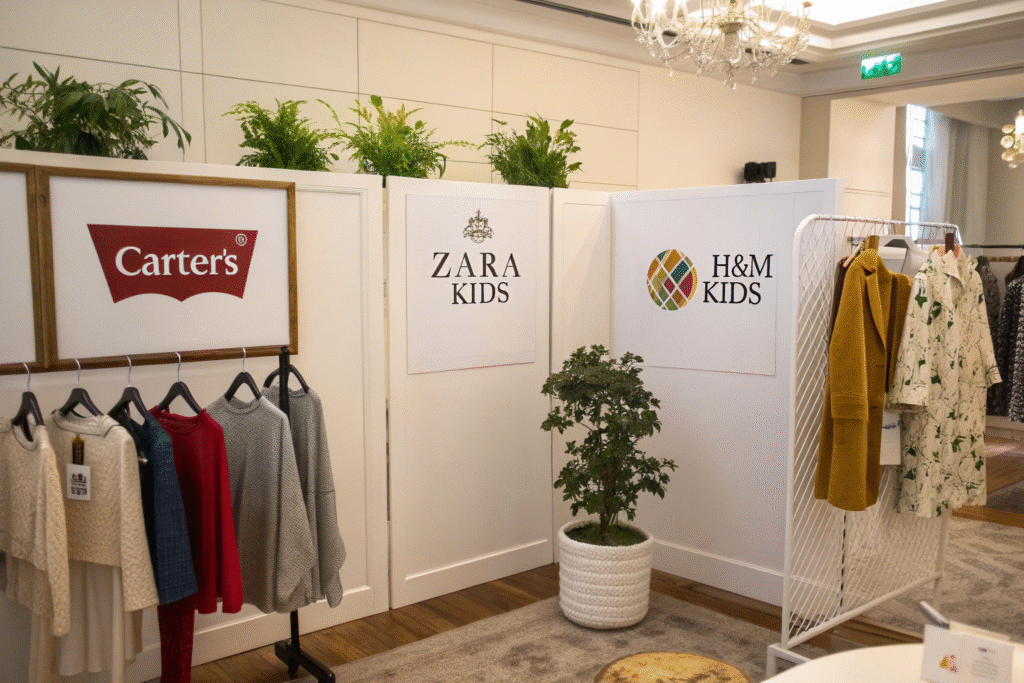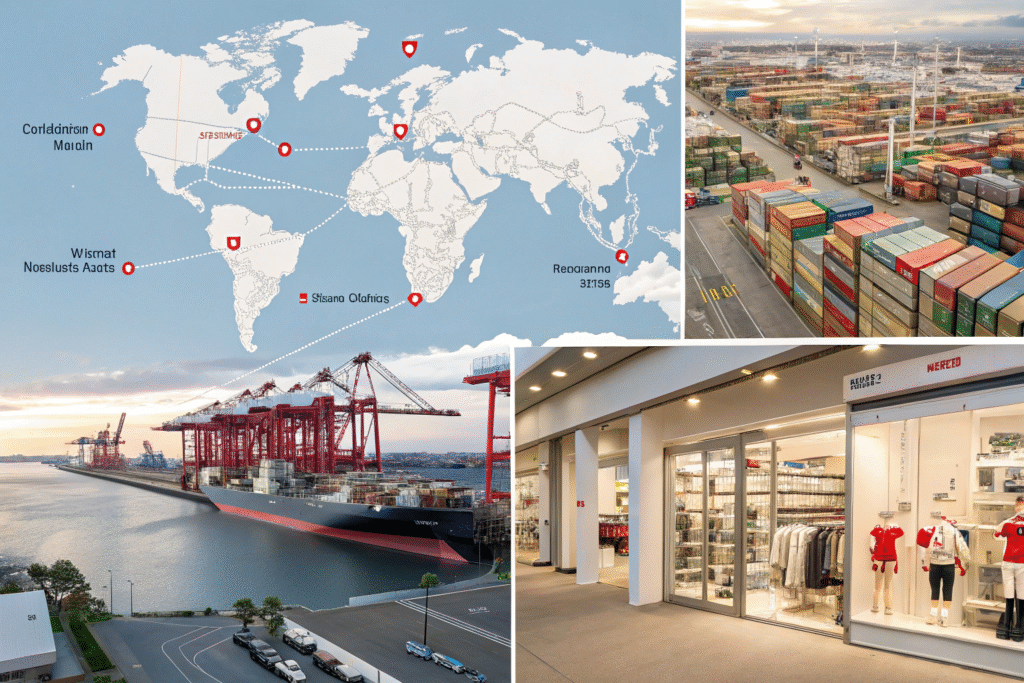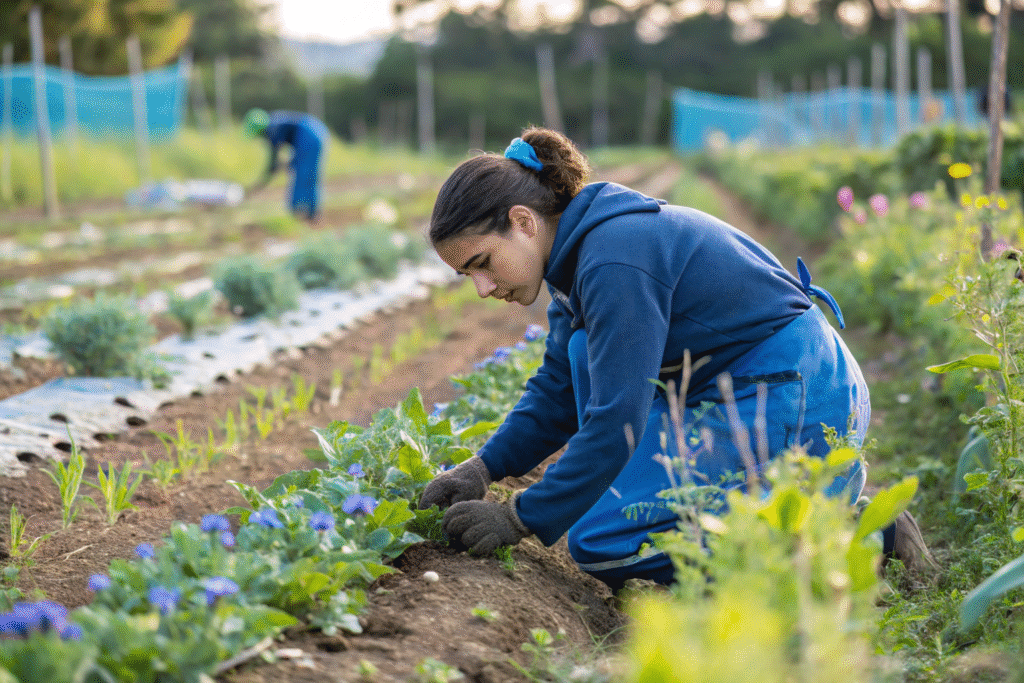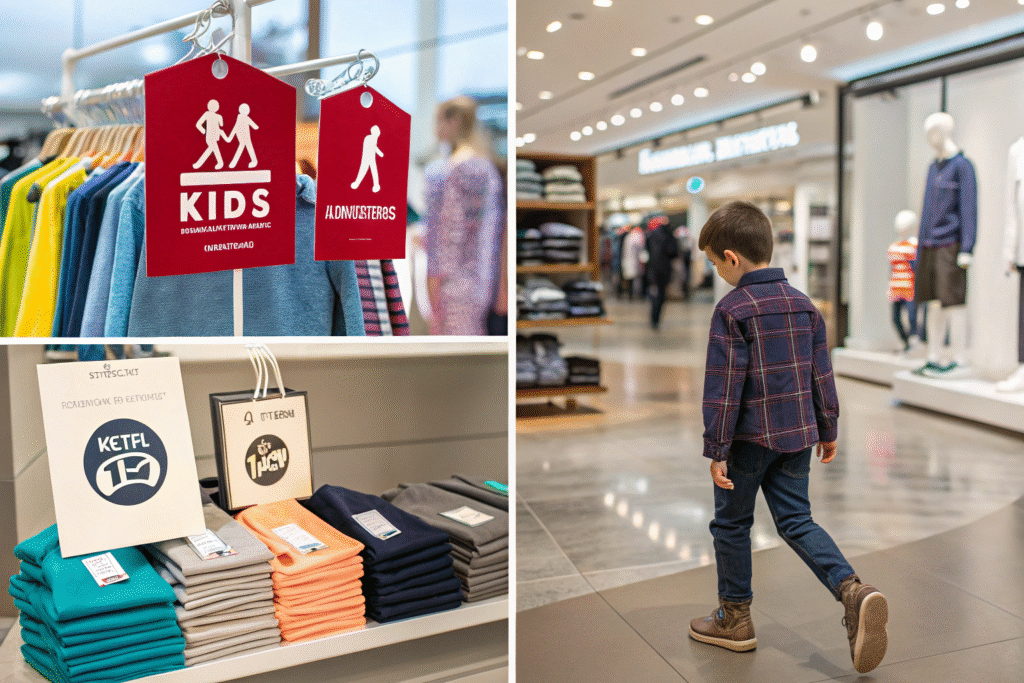In the fast-paced world of children’s fashion, some companies have managed to rise far above the competition. These brands lead not just in sales, but also in innovation, sustainability, and global influence. As a factory owner serving children’s apparel brands worldwide, I often study these giants closely.
In this article, I’ll highlight the top 15 children's wear companies in the world, offering insight into what makes them successful and why buyers and retailers trust their designs.
Whether you’re a startup looking for inspiration, or a sourcing agent comparing labels, understanding who leads the market gives you a strategic edge. These companies don’t just shape trends—they set the standard for what consumers expect.
What Makes a Global Children's Wear Brand Successful?
A successful children’s fashion brand balances practicality, emotional appeal, and trend-conscious design. But in the B2B space, what sets the winners apart is how well they align their supply chains, retail presence, and licensing strategies.
The best kidswear companies combine strong product identity with strategic sourcing, digital marketing, and safe, comfortable materials.

How Do They Maintain Brand Trust Globally?
The top global children’s wear brands usually prioritize child-safe materials, durability, and certifications like OEKO-TEX or CPSIA. They invest in consistent quality assurance and maintain production transparency.
Trust also stems from retail consistency—whether online or offline. From store experience to packaging, they build a narrative parents trust.
Do They Own Factories or Outsource Production?
Most large brands outsource production to trusted partners in China, India, and Southeast Asia. They rely on strong factory relationships and vendor compliance systems to ensure standards.
Outsourcing allows these brands to scale, enter new markets, and focus on design and marketing—while manufacturers handle logistics and labor efficiency.
How Do Leading Kidswear Brands Manage Global Distribution?
Top-tier children’s wear companies don’t just make great clothes—they know how to get them into millions of homes across the globe. Distribution channels are key to their growth.
A strong global distribution strategy mixes wholesale, retail, e-commerce, and licensing partnerships.

Do They Operate Own Stores or Partner with Retailers?
Many of the best-known brands operate a hybrid model—flagship stores plus partnerships with department stores, supermarkets, and e-commerce platforms. For example, OshKosh B'gosh is sold in both Carter’s stores and through third-party retailers like Target.
Brands like Zara Kids use vertically integrated retail to control presentation, while others like Disney Baby rely on licensing to scale rapidly.
How Important Is E-Commerce for These Companies?
Very. Especially post-COVID, brands expanded their direct-to-consumer channels. Many now offer app-based shopping, personalization, and localized online stores in multiple regions.
E-commerce enables global reach even without a retail footprint. For example, H&M Kids uses its website and marketplace presence to serve countries where it lacks physical stores.
What Role Does Sustainability Play in Their Strategy?
Sustainability has become a major driver in children's fashion, particularly for millennial parents. Major brands are adapting by embracing organic materials and ethical production.
From organic cotton to recycled polyester, sustainable sourcing is now a must for leading kidswear labels.

Are These Brands Using Organic and Recycled Materials?
Yes. Patagonia Kids uses organic cotton and fair trade-certified production. Mini Rodini is another leader in using GOTS-certified fabrics and reducing plastic use in packaging.
Some even offer take-back programs or clothing rentals for fast-growing toddlers—minimizing waste and maximizing value.
How Do They Communicate Sustainability to Parents?
Transparent marketing is key. Brands use websites, clothing tags, and social media to explain fabric origins, factory certifications, and even carbon footprint.
Many also release sustainability reports and collaborate with NGOs to verify claims. Nike Kids and Adidas Kids have entire sections dedicated to green initiatives.
Who Are the Top 15 Children’s Wear Brands Globally?
Based on global sales, brand awareness, and market presence, here are the 15 most influential children’s wear companies today:
These brands dominate in design, safety, supply chain strategy, and customer loyalty across continents.

1. Carter’s (USA)
The largest branded marketer of baby and toddler apparel in the U.S. Trusted for affordable, safe, and soft clothing. https://www.carters.com/
2. H&M Kids (Sweden)
Affordable fast fashion with seasonal kidswear that mirrors adult trends. https://www2.hm.com/
3. Zara Kids (Spain)
Part of Inditext Group, Zara Kids is globally influential for its fashionable, minimalist children's collections. https://www.zara.com/
4. The Children’s Place (USA)
Value-focused kidswear with strong U.S. and Canadian presence. Offers casual and schoolwear basics. https://www.childrensplace.com/
5. OshKosh B'gosh (USA)
Now owned by Carter’s, this brand is known for denim overalls and durable casualwear. https://www.oshkosh.com/
6. Nike Kids (USA)
Global leader in kids activewear, shoes, and performance gear. A staple for school-age fashion. https://www.nike.com/
7. Adidas Kids (Germany)
Athleisure-focused line offering stylish and comfortable clothing for sporty kids. https://www.adidas.com/us/kids
8. Gap Kids (USA)
Mid-market favorite offering preppy and polished everyday clothing. https://www.gap.com/browse/category.do?cid=1011144
9. Uniqlo Kids (Japan)
Known for tech fabrics, minimalist aesthetics, and high-quality basics at good prices. https://www.uniqlo.com/us/en/kids
10. Mini Rodini (Sweden)
Organic, ethical, and design-driven kidswear brand. Beloved for quirky prints and GOTS fabrics. https://www.minirodini.com/
11. Patagonia Kids (USA)
Sustainable, outdoor-focused brand with recycled fabrics and lifetime wear policies. https://www.patagonia.com/kids/
12. Mayoral (Spain)
Stylish, European kidswear with great formal options for children. https://www.mayoral.com/
13. Primark Kids (UK)
Budget-friendly with wide international reach. Offers basics, licensed character apparel, and seasonal drops. https://www.primark.com/
14. Disney Baby (USA)
Licensing-based children’s line tied to Disney characters. Distributed across major retail chains. https://shopdisney.com/baby
15. Jacadi Paris (France)
Luxury kidswear brand with timeless French styling, high-end fabrics, and boutique appeal. https://www.jacadi.us/
Conclusion
The global children's fashion market is shaped by these 15 trailblazing companies. From baby basics to high-end fashion, they’ve earned their reputation by staying ahead of trends, investing in safety and sustainability, and understanding the emotional needs of modern parents.
If you’re building your own kidswear label, studying these companies—how they source, market, and distribute—can offer powerful insight. And if you’re a retailer or distributor, knowing what these brands do right can help you choose reliable manufacturing partners like us at Fumao.
We’ve worked with many emerging brands looking to follow in these footsteps—and we’d be glad to help you build your own path to success.










